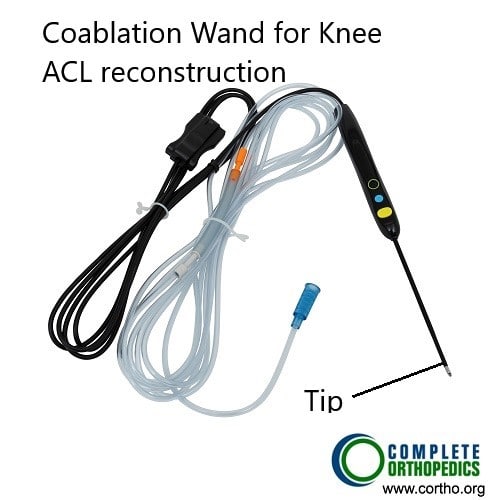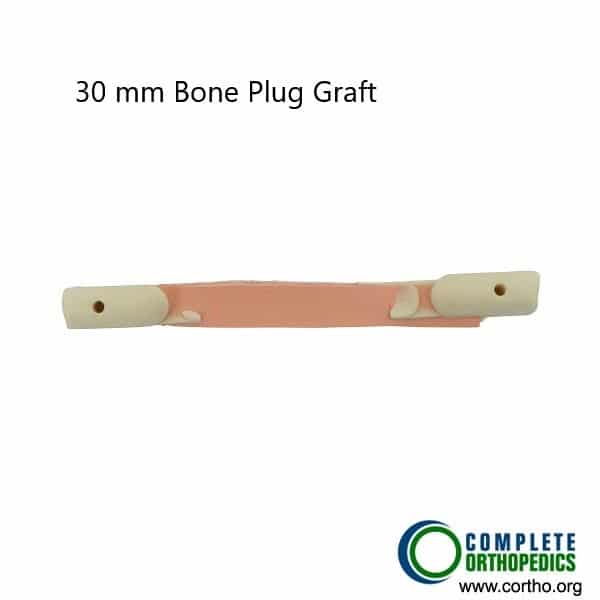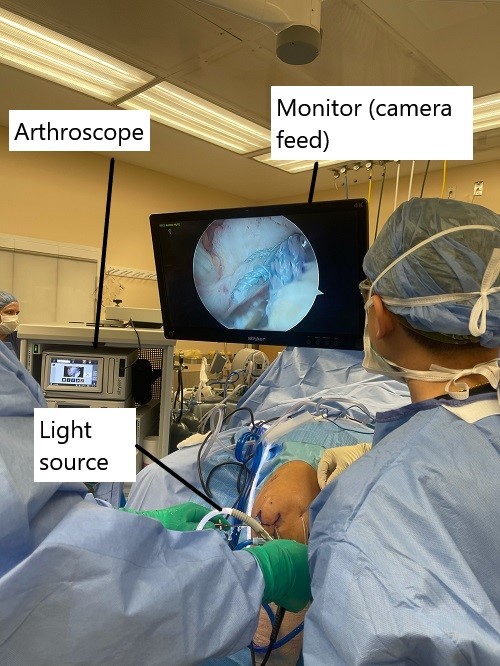ACL Surgery Graft Failure Symptoms
Anterior Cruciate Ligament (ACL) injuries are common among athletes and individuals involved in physical activities. When the ACL tears, surgery is often required to repair or reconstruct the ligament. However, there is a risk of graft failure post-surgery, which can lead to recurrent instability and pain in the knee. In this article, we’ll delve into the causes and symptoms of ACL surgery graft failure in easy-to-understand terms.
What is the ACL and Why is it Important? The ACL is one of the major ligaments in the knee that helps stabilize it during movements like running, jumping, and pivoting. It acts like a strong rope connecting the thighbone (femur) to the shinbone (tibia), preventing excessive forward movement of the tibia in relation to the femur. In essence, it plays a crucial role in maintaining the stability and functionality of the knee joint.
Understanding ACL Surgery
When the ACL is severely injured, surgery may be necessary to restore knee stability and function. During ACL surgery, the torn ligament is either repaired or reconstructed using a graft, which is usually taken from another part of the patient’s body (autograft) or from a donor (allograft). The graft serves as a scaffold for new ligament tissue to grow, eventually restoring stability to the knee.
Anterior cruciate ligament (ACL) reconstruction surgery may need revision surgery due to graft failure. The ACL reconstruction is a highly successful surgery and only a few cases may need revision surgery.
The cause of revision surgery is mainly graft failure following ACL reconstruction surgery. The graft failure occurring in the first 12 months following surgery is generally a result of non-traumatic causes and the failure after 12 months is mostly due to re-injury.
During an ACL reconstruction surgery, the surgeon utilizes an arthroscope. An arthroscope has a minute camera with a light source which is inserted in the knee joint using a keyhole incision. Through another incision, miniature instruments are inserted. The surgeon uses the camera feed on an outside tv monitor to guide the instruments.
The ACL is reconstructed utilizing a graft that may be harvested from the patient’s own body known as autograft or may be harvested from a cadaver known as an allograft. A tunnel is created in the upper end of the shinbone and the lower end of the thigh bone.
The graft is passed through the tunnel and secured using screws, endo-buttons, etc. The ACL reconstruction surgery is followed by a rehabilitation protocol to help the patients get back to their activities of daily living and subsequent sports/athletic activities in the case of athletes.
Symptoms of ACL graft failure
Symptoms of ACL Surgery Graft Failure: Recognizing the signs of graft failure is essential for prompt diagnosis and treatment. Common symptoms include:
Recurrent Instability: One of the primary symptoms of graft failure is a recurrence of instability in the knee. Patients may experience a sensation of the knee giving way or buckling, especially during physical activities or movements that stress the ACL.
Persistent Pain: Graft failure can cause persistent pain in the knee, particularly during movements that involve bending or twisting of the joint. The pain may be dull or sharp and can interfere with daily activities.
Swelling: Swelling around the knee joint is another common symptom of graft failure. The swelling may be localized or diffuse and may worsen after physical activity or prolonged standing.
Decreased Range of Motion: Graft failure can lead to stiffness and decreased range of motion in the knee joint. Patients may have difficulty fully extending or flexing the knee, which can affect their ability to perform activities of daily living.
Feeling of Giving Way: Patients with graft failure may report a feeling of the knee “giving way” or instability, even during simple movements like walking or climbing stairs. This sensation can be disconcerting and may indicate a problem with the reconstructed ACL.
Decreased Functionality: As graft failure compromises the stability of the knee joint, patients may notice a decrease in overall functionality. Simple tasks such as walking or standing for long periods may become challenging, affecting quality of life.

Instrument (co-ablation wand) used in knee arthroscopic surgery.
Causes
- Patients who receive ACL grafts in the form of allograft may develop graft rejection. Although rare, the cadaveric graft may cause the body’s immune system to react to it as an adverse substance. The subsequent inflammation may cause the subsidence of the allograft. Immunological allograft rejection is more common in younger patients.|||
- Overzealous or aggressive rehabilitation following the ACL reconstruction surgery may lead to loosening of the graft attachment in the shin bone or the thigh bone.
- Wrong ACL reconstruction techniques are the most common cause of ACL graft failure.
- Mal-position of the tunnel for the ACL graft may place abnormal stress on the graft that may lead to loosening and subsequent failure. Anatomical placement of the graft in the natural position of the ACL is important to prevent graft failure.
- Weak fixation of the graft to the bony attachment at the shin bone or the thigh bone may lead to loosening or rupture. The graft needs to be securely attached at either end of the tunnel to prevent prolapse.
- The graft may also get impinged in the notch of the lower end of the thigh bone due to mal-position or due to the inherent shape of the notch.|
- Re-injury may cause graft failure, especially in athletes. The amount of force required for rupture of the reconstructed graft is significantly more as the graft is stronger than the natural ACL.
- Missing the diagnosis of additional injuries before and during the surgical reconstruction of the ACL may lead to instability. The instability of the joint despite the ACL reconstruction may lead to its failure. Usually, posterolateral corner injuries or meniscal tears may be missed during the ACL reconstruction and the subsequent instability may put additional stress on the ACL graft.
- Poor healing of the graft due to excessive scar tissue formation or due to systemic diseases may cause subsequent graft failure.

Bone plug graft used in ACL reconstruction.
Diagnosis and Management of ACL graft failure
The diagnosis of the ACL graft is made after a thorough physical examination and radiological studies. The physician may perform physical examination tests to look for instability and alignment. Radiological studies in the form of plain and weight-bearing X-rays may be done. The surgeon may look for alignment of the hip joint and the ankle joint with the knee joint to assess the cause of instability.
A CT scan or an MRI may be done to evaluate the cause of failure. MRI and CT scans may provide information regarding the bony tunnel. Based on the diagnosis, the management may or may not involve surgery.
A revision ACL reconstruction surgery may be done in a single-stage or may require two stages in patients who may need bone grafting. The revision surgery may utilize an autograft or an allograft. The surgical technique involves the removal of the prior
ACL graft and any scar tissue using an arthroscope. Any additional injuries such as meniscal tears are treated arthroscopically as well. The new graft is placed in the correct anatomical position.
Rarely, patients may need additional surgical techniques such as osteotomies. Osteotomies involve cutting of the bone to alleviate any mal-alignment of the extremity. After the surgery, a rehabilitation protocol is again followed aimed towards a full range of motion and return to activities of daily living.
Preventing ACL Surgery Graft Failure
While not all cases of graft failure can be prevented, there are steps that patients can take to reduce the risk:
Follow Rehabilitation Guidelines: Adhering to the prescribed rehabilitation program following ACL surgery is crucial for ensuring proper healing and reducing the risk of graft failure. Patients should work closely with their physical therapist to gradually progress through exercises and activities.
Avoid Premature Return to Sports: Returning to sports or physical activities too soon after ACL surgery can increase the risk of graft failure. Patients should wait until they have regained sufficient strength, stability, and range of motion before resuming high-impact activities.
Maintain Good Knee Health: Taking steps to maintain overall knee health, such as maintaining a healthy weight, avoiding activities that place excessive stress on the knee, and practicing proper biomechanics during physical activities, can help reduce the risk of graft failure.
Communicate with Healthcare Providers: Patients should communicate openly with their healthcare providers about any concerns or symptoms they experience following ACL surgery. Early detection and intervention can help prevent complications such as graft failure.
Conclusion
ACL surgery graft failure can be a challenging complication that affects the stability and functionality of the knee joint. Understanding the causes and symptoms of graft failure is essential for prompt diagnosis and treatment. By following rehabilitation guidelines, avoiding premature return to sports, and maintaining good knee health, patients can reduce the risk of graft failure and improve long-term outcomes following ACL surgery. If graft failure is suspected, seeking timely medical attention is crucial for appropriate management and restoration of knee function.
Do you have more questions?
How common is ACL surgery graft failure?
ACL surgery graft failure occurs in a small percentage of cases, estimated to be around 5% to 15%, depending on various factors such as patient age, activity level, and surgical technique.
Can ACL surgery graft failure occur immediately after surgery?
While it’s possible for graft failure to occur shortly after surgery due to factors such as graft tension or technical errors during the procedure, it’s more common for graft failure to occur months or even years later.
Are there different types of grafts used in ACL surgery, and do they affect the risk of graft failure?
Yes, there are different types of grafts used in ACL surgery, including autografts (such as the patellar tendon, hamstring tendon, or quadriceps tendon) and allografts (donor tissue). While the choice of graft may influence the risk of graft failure, the success of surgery depends on various factors beyond just the type of graft.
What are the potential complications of revision ACL surgery for graft failure?
Revision ACL surgery for graft failure carries similar risks as primary ACL surgery, including infection, stiffness, and persistent instability. Additionally, the presence of scar tissue from the previous surgery may complicate the revision procedure.
How long does it take to recover from revision ACL surgery?
Recovery from revision ACL surgery can take longer than primary ACL surgery, often requiring several months of rehabilitation and gradual return to activities.
Is ACL surgery graft failure more common in certain age groups?
ACL surgery graft failure can occur in patients of all age groups, but it may be more common in younger patients due to higher activity levels and potential for reinjury.
Are there specific factors that increase the risk of ACL surgery graft failure?
Yes, several factors can increase the risk of ACL surgery graft failure, including inadequate rehabilitation, premature return to sports, technical errors during surgery, and individual biological factors.
Can ACL surgery graft failure be prevented?
While not all cases of graft failure can be prevented, patients can take steps to reduce the risk by following rehabilitation guidelines, avoiding premature return to sports, and maintaining good knee health.
What should I do if I suspect graft failure after ACL surgery?
If you experience symptoms such as recurrent instability, persistent pain, or swelling after ACL surgery, it’s important to consult with your orthopedic surgeon for a thorough evaluation and appropriate management.
Are there alternative treatments for ACL injuries besides surgery?
In some cases, nonsurgical treatments such as physical therapy and activity modification may be recommended for ACL injuries, particularly for individuals with lower activity levels or specific anatomical factors.
How long does it typically take for a graft to heal after ACL surgery?
The time it takes for a graft to heal after ACL surgery can vary depending on factors such as graft type, patient age, and adherence to rehabilitation protocols. Generally, it takes several months for the graft to fully integrate with surrounding tissues.
Can ACL surgery graft failure lead to long-term complications?
Yes, ACL surgery graft failure can lead to long-term complications such as persistent instability, recurrent injuries, and accelerated joint degeneration (osteoarthritis) if left untreated.
Are there any dietary or lifestyle changes that can help promote graft healing after ACL surgery?
While maintaining a balanced diet and healthy lifestyle can support overall healing and recovery after ACL surgery, there are no specific dietary or lifestyle changes proven to directly promote graft healing.
Is it possible to return to sports or physical activities after experiencing graft failure?
Yes, with appropriate treatment and rehabilitation, many patients can return to sports or physical activities after experiencing graft failure. However, the timing and feasibility of return to activities depend on individual factors and the severity of the graft failure.
Can ACL surgery graft failure occur in both knees?
Yes, ACL surgery graft failure can occur in one or both knees, particularly in individuals who participate in high-impact sports or activities that place repeated stress on the knees.
Are there any warning signs that indicate an increased risk of ACL surgery graft failure?
While there are no definitive warning signs for ACL surgery graft failure, patients should be vigilant for symptoms such as recurrent instability, persistent pain, or swelling after surgery, as these may indicate a potential problem with the graft.
How can I prevent reinjury after ACL surgery?
To prevent reinjury after ACL surgery, it’s important to follow rehabilitation guidelines, gradually increase activity levels, and use appropriate protective equipment (such as braces) during sports or high-risk activities.
Are there any specific exercises or activities I should avoid after ACL surgery to reduce the risk of graft failure?
Patients should avoid high-impact activities, sudden changes in direction, and heavy lifting during the initial stages of rehabilitation to reduce the risk of graft failure. Your physical therapist can provide guidance on safe exercises and activities.
Can ACL surgery graft failure be detected on imaging studies such as X-rays or MRI?
Imaging studies such as MRI can help assess the integrity of the reconstructed ACL graft and identify signs of graft failure, such as graft laxity or abnormal signal intensity.
Is it normal to experience swelling and discomfort in the knee after ACL surgery, even if the graft is intact?
Yes, swelling and discomfort are common after ACL surgery due to the trauma of the procedure and the body’s healing response. However, if symptoms persist or worsen over time, further evaluation may be necessary to rule out graft failure or other complications.
Are there any medications that can help prevent graft failure after ACL surgery?
There are no specific medications proven to prevent graft failure after ACL surgery. However, your surgeon may prescribe pain medications or anti-inflammatory drugs to manage symptoms during the recovery period.
How soon can I return to driving after ACL surgery, and does it increase the risk of graft failure?
The timing of return to driving after ACL surgery depends on factors such as the type of surgery, the use of pain medications, and individual comfort level. Driving typically becomes feasible once patients regain sufficient strength and range of motion in the knee, but it’s important to consult with your surgeon for personalized guidance. Driving itself does not inherently increase the risk of graft failure, but patients should avoid driving if they experience significant pain, stiffness, or limitations in mobility that could affect their ability to operate a vehicle safely.
Are there any psychological effects associated with experiencing graft failure after ACL surgery?
Experiencing graft failure after ACL surgery can be emotionally challenging for patients, as it may necessitate additional treatment and delay return to sports or activities. Patients may experience feelings of frustration, disappointment, or anxiety about reinjury. It’s important for patients to communicate openly with their healthcare providers and seek support from family, friends, or mental health professionals if needed to cope with these emotions and maintain a positive outlook on their recovery.

Dr. Suhirad Khokhar
My name is Dr. Suhirad Khokhar, and am an orthopaedic surgeon. I completed my MBBS (Bachelor of Medicine & Bachelor of Surgery) at Govt. Medical College, Patiala, India.
I specialize in musculoskeletal disorders and their management, and have personally approved of and written this content.
My profile page has all of my educational information, work experience, and all the pages on this site that I've contributed to.

